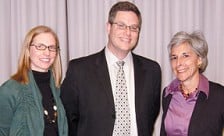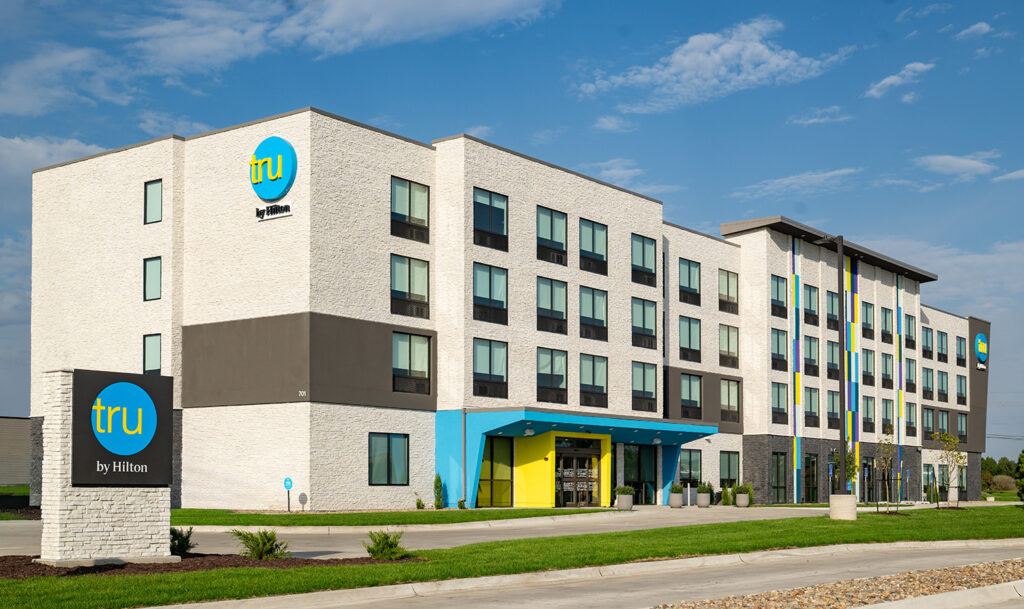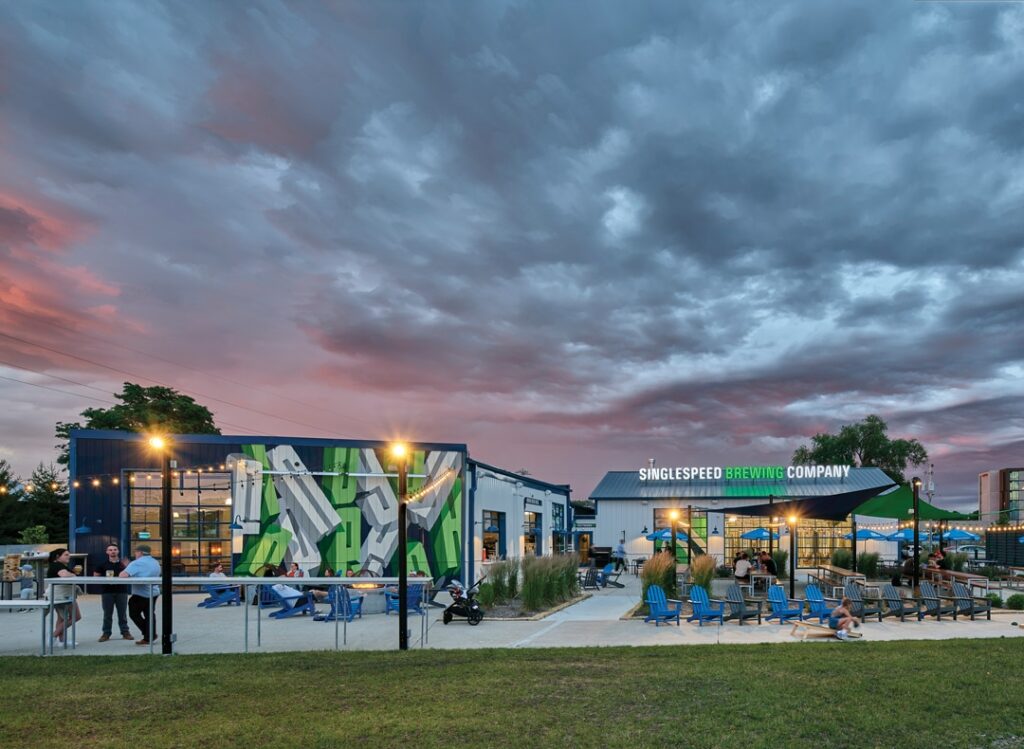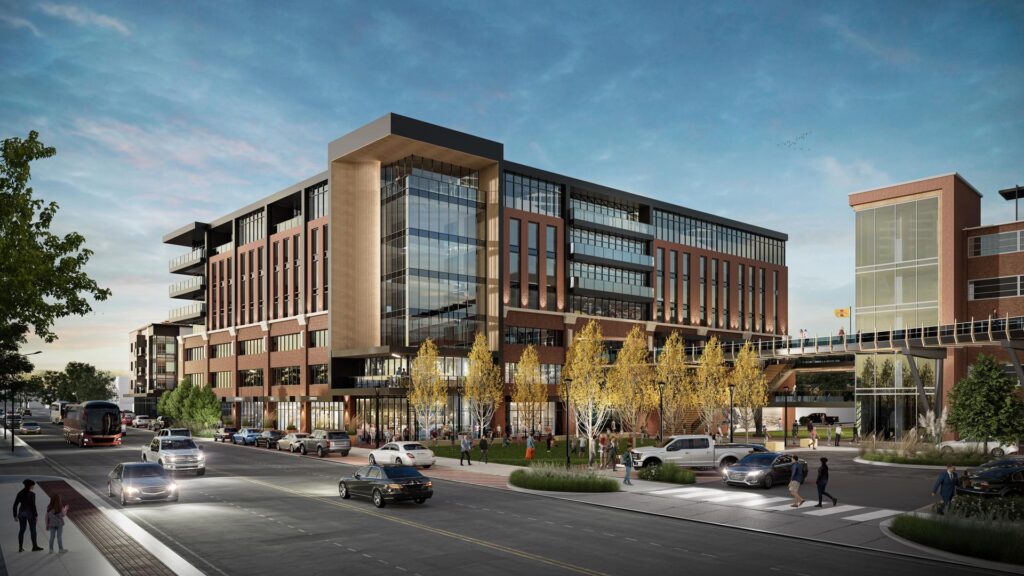Entering a Crossroads

Laying out the strengths and weaknesses of Greater Des Moines and the surrounding region is far from a quick description.
Such was the basis for a 184-page Competitive Capacity Assessment release last week by Market Street Services Inc., as part of the Greater Des Moines Partnership and Community Foundation of Greater Des Moines’ Capital Crossroads long-term planning project. The report was presented at a public meeting last Wednesday, and provides a sort of outline for the committee to start developing a formal specific plan for the city and region.
“I think the report has shown that Central Iowa is an incredibly attractive place to live,” said Ellen Anderson, director of research with Market Street. “No region’s perfect. There’s always going to be some things to work on.”
Des Moines is no exception.
If there is an underlying theme of the report, it’s that “Greater Des Moines’ community trajectory is on a definite upswing,” according to the report’s conclusion. However, “the most competitive economic climate in history compels Greater Des Moines to move forward aggressively with programs, processes, and partnerships designed to take its competitive position to its next level of effectiveness.”
Translation: Des Moines, and the surrounding area, is in good shape, but there are still issues to deal with.
The study involved a public survey in which nearly 4,000 people participated, along with 30 focus groups and 50 one-on-one interviews with local leaders. Those results will be used by the 50-member steering committee, chaired by Polk County Supervisor Angela Connolly, Wells Fargo Home Mortgage Co-President Cara Heiden and Community Foundation of Greater Des Moines President J. Barry Griswell, to lay out plans for future community and economic development.
The committee was divided into three break-out groups covering the categories of people, prosperity and place, which was also how the report was broken up. Market Street compared figures from the Des Moines Metropolitan Statistical Area (MSA) — everything within a 50-mile radius of the capital — to the Denver, Madison and Omaha MSAs and the national average.
Key findings – People
• The young professional scene in Des Moines is strong, according to an index created by Next Generation Consulting, which ranked Des Moines second in its peer group. Des Moines ranked well in cost of lifestyle, vitality and social capital, and two of those three categories were listed among survey respondents’ three most important factors. However, young professionals said the area needs to better market itself to displace the stereotype that Iowa is boring, and also expressed the desire to have their opinions be more integrated in the community. “They are part of our generation, and that’s what makes up our future,” Connolly said. “We need to get them more engaged. And they really want to do it. That’s the good news for me.”
• Iowa ranked No. 14 in the nation in the percentage of 4-year-olds served by pre-kindergarten programs, but many respondents said they would like to see a far greater number of local children eligible. People felt good overall about K-12 education, but statistics showed that the Des Moines Independent Community School District enrollment had decreased slightly from 2004 to 2009, and the dropout rate of 7.9 percent was higher than all comparison metro areas except Denver. Also, 55.7 percent of Des Mouines students were eligible for free or reduced lunch. The area’s colleges and universities ranked highly ithe online survey.
• From a socio-economic standpoint, the Des Moines metro poverty rate is 10.1 percent and the 10-year poverty growth rate was consistent with the state but was higher than the national average.
• From a workforce development standpoint, area employers say it’s tough to attract top talent because of a perception that the region is all “corn and cows.” Still, the Des Moines MSA is competitively positioned to sustain its workforce in coming years.
Key findings – Prosperity
• Des Moines has lost fewer jobs in the last year than all comparison areas, and gained more in the last five years. Perception is still a problem, though, survey respondents said. “That didn’t come out of thin air that the perception of this region does not really jibe with the reality,” said Alex Pearlstein, director of projects with Market Street. “That’s something that the (Greater Des Moines Partnership) has been hearing for years, and they certainly put some investment and resources toward it.”
• Greater diversity of the economy was an issue numerous stakeholders brought up, the survey said, as people are worried about what a downturn in the region’s finance and insurance sector could mean. “Des Moines is going to turn into Detroit unless we diversify this economy,” one respondent said. A possible growth in life and animal sciences jobs in Ames and Story County could help alleviate that.
• Commercial property taxes are a hindrance for businesses to relocate to Iowa, the study said, because commercial property taxes are double the next highest comparison region. The Tax Foundation found that Iowa has the sixth-worst tax climate in the nation. Another problem: downtown Des Moines has more than 1 million square feet of vacant office space. Regulatory and permitting costs were found to be competitive, as well as office and retail lease rates.
• Respondents were largely critical of the support climate for small business development, saying there are many programs available but it was generally unclear which agency or department to contact.
• Iowa State University appears to be in a position to aid in technology commercialization and innovation as a top-tier research institution, the study said, but input respondents with knowledge of the university said intellectual property ownership requirements by the ISU Research Foundation are potential constraints. The university’s conflict of interest policy also hinders professors and researchers from developing technology, they said.
Key findings – Place
• Maybe the most positive statistic of the entire survey is that 87 percent of respondents said Central Iowa is a great place to live, and 57 percent said they expect to raise a family in the region. Only 32 percent, however, were confident their children will stay.
• People expressed the desire for more economic collaboration between Ames and Greater Des Moines, citing a current “chasm.” “Communities are not really being measured city by city or county by county,” Pearlstein said. “There is the reality that the unit of measurement in economic development is more often than not regional. It’s easy to say we are going to do things regionally … but it’s difficult.”
• There seem to be two schools of thought regarding public transportation. Respondents believe Des Moines International Airport can be a major attraction to businesses and talent, but some want to wait for Des Moines to provide incentives for more direct flights, while others want airport business to grow as a result of growth in the city. Likewise, people expressed the desire for more of a bus culture, or even developing light passenger rail, but conceded there might be too much of a “mindset of individuality” and that the demand won’t be there because it is so easy to drive to work.
• Respondents expressed a desire to put more stock into revitalizing non-downtown neighborhoods in the city of Des Moines.
• The low cost of living is a selling point for businesses to bring prospects to the region, respondents said. Health-care costs are good relative to comparison communities, and 55 percent of respondents said the region promotes a healthy lifestyle. Likewise, crime statistics show Des Moines is safer than Denver, Omaha and the national average.
• A concern is that the community’s civic leadership structure is limited to the top of the socioeconomic structure, as respondents worried there would be a philanthropic gap in transitioning from the current civic leaders to the new generation of leaders.
Now what?
The next step is to develop a target cluster and marketing analysis, designed to identify key business sectors for growth.
After that, the research will be put together to create a five-year plan, using anywhere from four to seven big goal areas, each with its own objectives and specific action steps.
“What this looks like is really deciding who needs to be doing what, who needs to wake up every day and work on these issues and make sure we’re moving in the right direction,” Anderson said.
Said Connolly, “That’s going to be the tough process, I think. How do we accomplish these things? We certainly don’t want to put that plan on the shelf.”











